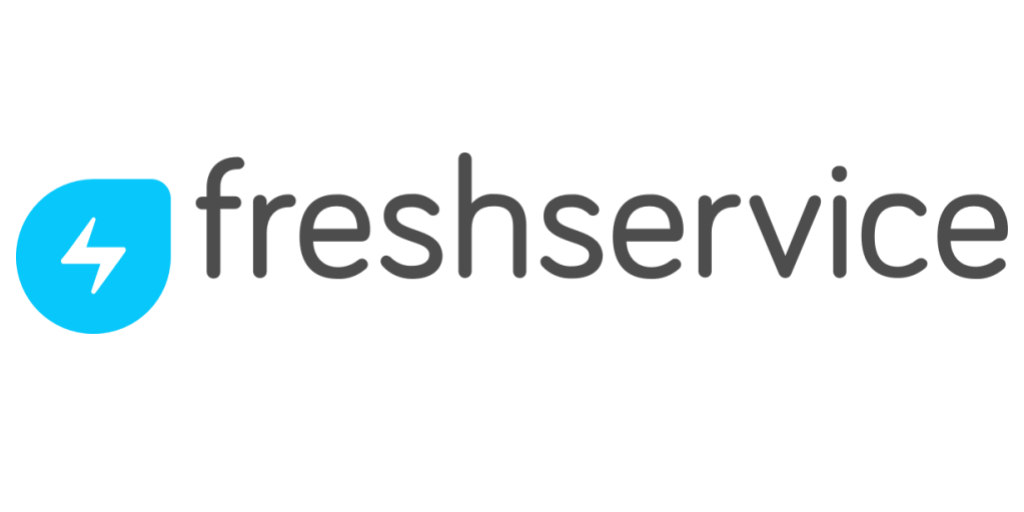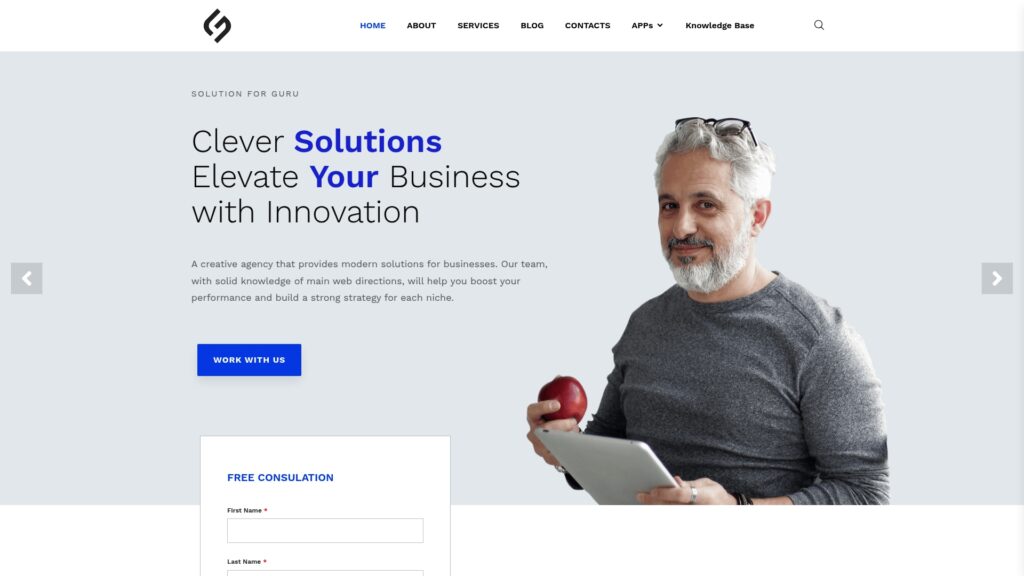How Can You Create an Effective ITSM Strategy Using Best Practices?

In today’s fast-paced digital landscape, organizations face mounting pressure to deliver seamless IT services while managing costs and maintaining operational efficiency. Consequently, IT Service Management (ITSM) has emerged as a critical framework for aligning IT services with business objectives, improving service delivery, and enhancing customer satisfaction. However, implementing ITSM successfully requires more than just adopting tools and processes—it demands a comprehensive strategy built on proven best practices.
This article explores how organizations can develop robust ITSM strategies that drive tangible business value. Moreover, we’ll examine practical approaches to implementation, key success factors, and how leading ITSM platforms can support your journey toward operational excellence.
Table of Contents
- Quick Summary
- What Is ITSM and Why Does Your Organization Need a Strategic Approach?
- How Do You Develop a Comprehensive ITSM Strategy?
- What Are the Essential Best Practices for ITSM Implementation?
- How Can ITSM Software Solutions Transform Your Service Delivery?
- What Metrics Should You Track to Measure ITSM Success?
- Summing up
- Frequently Asked Questions
- Why Partner with Solution for Guru?
Quick Summary
Creating an effective ITSM strategy requires careful planning, stakeholder alignment, and selection of appropriate tools. This comprehensive guide covers:
- Strategic foundations: Understanding ITSM frameworks and aligning IT services with business goals
- Best practices: Implementing proven methodologies for service management excellence
- Technology enablement: Leveraging platforms like Freshservice, ManageEngine, and Zendesk
- Performance measurement: Tracking KPIs and metrics that matter
- Change management: Ensuring successful adoption across your organization
- Common pitfalls: Avoiding implementation challenges and roadblocks
Whether you’re starting your ITSM journey or refining existing processes, this guide provides actionable insights to build a strategy that delivers measurable results.
What Is ITSM and Why Does Your Organization Need a Strategic Approach?
IT Service Management (ITSM) represents a comprehensive approach to designing, delivering, managing, and improving the way IT services are utilized within an organization. Furthermore, ITSM encompasses the entire lifecycle of IT services, from initial planning and design through transition, operation, and continual improvement.
Understanding the Core Components of ITSM
At its foundation, ITSM combines people, processes, and technology to deliver value to customers and stakeholders. The framework typically includes:
Service Strategy: This component focuses on understanding organizational objectives, customer needs, and market spaces. Additionally, it involves defining how IT services will create value and support business goals.
Service Design: Organizations must design new or modified services, including all necessary elements such as service level agreements, capacity planning, and availability management. Consequently, this phase ensures services meet both current and future business requirements.
Service Transition: This phase manages the deployment of new or changed services into production environments. Moreover, it includes change management, release management, and knowledge management processes.
Service Operation: Day-to-day operational activities ensure services are delivered effectively and efficiently. Therefore, this includes incident management, problem management, and request fulfillment processes.
Continual Service Improvement: Organizations must constantly evaluate and improve service quality, operational efficiency, and business continuity. Thus, this creates a cycle of ongoing enhancement.
Why Strategic Planning Matters for ITSM Success
Without a deliberate strategic approach, ITSM initiatives often struggle to deliver expected benefits. A well-crafted strategy provides:
- Clarity of purpose: Teams understand how ITSM supports broader business objectives
- Resource optimization: Organizations allocate budgets and personnel more effectively
- Risk mitigation: Potential challenges are identified and addressed proactively
- Stakeholder alignment: Business and IT leaders work toward common goals
- Measurable outcomes: Success criteria are defined from the outset
Research consistently shows that organizations with documented ITSM strategies achieve higher service quality, greater cost efficiency, and improved customer satisfaction compared to those implementing ITSM ad hoc.
How Do You Develop a Comprehensive ITSM Strategy?

Developing an effective ITSM strategy requires systematic planning and careful consideration of your organization’s unique context. The following framework provides a structured approach to strategy development.
Step 1: Assess Your Current State
Before charting a path forward, organizations must understand their current position. This assessment should examine:
Process maturity: Evaluate existing IT service management processes against industry standards like ITIL (Information Technology Infrastructure Library). Identify gaps, inefficiencies, and areas requiring improvement. Additionally, document informal processes that may not be officially recognized but play important roles.
Technology landscape: Catalog current tools, systems, and platforms supporting IT service delivery. Furthermore, assess their capabilities, limitations, and integration potential. Many organizations discover they have overlapping or underutilized tools during this phase.
Organizational culture: Understanding cultural factors proves critical for successful implementation. Therefore, evaluate how receptive your organization is to change, existing collaboration patterns, and communication norms.
Resource availability: Document available budgets, personnel, skills, and time constraints. Moreover, identify resource gaps that may impact implementation.
Step 2: Define Your Vision and Objectives
Subsequently, articulate a clear vision for what ITSM success looks like in your organization. Your vision should:
- Align with overall business strategy and objectives
- Address specific pain points identified in the current state assessment
- Be ambitious yet achievable within realistic timeframes
- Inspire stakeholders and team members
Translate this vision into specific, measurable objectives using the SMART framework (Specific, Measurable, Achievable, Relevant, Time-bound). For example:
| Objective Category | Example SMART Objective |
|---|---|
| Service Quality | Reduce average incident resolution time from 8 hours to 4 hours within 12 months |
| Customer Satisfaction | Achieve a customer satisfaction score of 4.5/5.0 or higher within 18 months |
| Operational Efficiency | Decrease repetitive service requests by 40% through self-service implementation within 9 months |
| Cost Optimization | Reduce IT operational costs by 15% while maintaining or improving service levels within 24 months |
Step 3: Select Your ITSM Framework
Organizations have several established frameworks to choose from, each with distinct advantages. The most widely adopted include:
ITIL (Information Technology Infrastructure Library): The most comprehensive and popular ITSM framework globally. ITIL provides detailed guidance across the entire service lifecycle. Consequently, it works well for organizations seeking best practice guidance and industry standardization.
COBIT (Control Objectives for Information and Related Technologies): Focuses on IT governance and management. Therefore, COBIT proves valuable for organizations prioritizing compliance, risk management, and alignment with enterprise governance.
ISO/IEC 20000: An international standard for ITSM that provides certification opportunities. Organizations seeking formal recognition of their ITSM capabilities often pursue ISO 20000 compliance.
Agile and DevOps Integration: Modern organizations increasingly blend traditional ITSM frameworks with Agile and DevOps principles. This hybrid approach balances governance with speed and flexibility.
Most successful organizations adopt a framework as a foundation while adapting it to their specific needs rather than implementing it rigidly.
Step 4: Design Your Service Catalog
The service catalog serves as the cornerstone of effective ITSM, providing a single source of truth for available IT services. When designing your catalog:
Business Service Catalog: Present services from the customer perspective using business language. For instance, rather than listing “Exchange Server Access,” describe it as “Email and Calendar Services.”
Technical Service Catalog: Document the technical components supporting each business service. This internal view helps IT teams understand dependencies and relationships.
Service Definitions: Clearly articulate what each service includes, who can access it, what service levels apply, and how to request it. Moreover, include service owners responsible for each offering.
Step 5: Establish Governance and Roles
Effective ITSM requires clear governance structures and defined roles. Therefore, establish:
ITSM Steering Committee: A cross-functional group providing strategic oversight, resolving conflicts, and ensuring alignment with business objectives. This committee typically includes IT leadership, business stakeholders, and process owners.
Process Owners: Individuals responsible for specific ITSM processes (incident management, change management, etc.). They ensure processes are designed effectively, followed consistently, and improved continuously.
Service Owners: Personnel accountable for specific services end-to-end, regardless of underlying technology or support teams. Service owners act as advocates for their services and coordinate improvements.
Support Roles: Define clear responsibilities for service desk analysts, technical specialists, and support teams. Additionally, document escalation paths and collaboration protocols.
Step 6: Create Your Implementation Roadmap
Rather than attempting to implement all ITSM processes simultaneously, successful organizations adopt a phased approach. Your roadmap should:
Prioritize based on value and feasibility: Start with processes that deliver quick wins and build momentum. For example, many organizations begin with incident management and self-service capabilities.
Define milestones and timelines: Break implementation into manageable phases with clear deliverables. Furthermore, build in time for testing, refinement, and user feedback.
Allocate resources: Ensure adequate budget, personnel, and executive sponsorship for each phase. Additionally, plan for ongoing resource requirements beyond initial implementation.
Plan for integration: Consider how processes will work together and how technology components will integrate. Consequently, avoid creating silos that undermine overall effectiveness.
What Are the Essential Best Practices for ITSM Implementation?
Implementing ITSM successfully requires adherence to proven best practices that help organizations avoid common pitfalls and maximize value realization.
Best Practice 1: Start with Strong Executive Sponsorship
ITSM initiatives that lack visible executive support face significantly higher failure rates. Therefore, secure active sponsorship from senior leadership who can:
- Communicate the strategic importance of ITSM to the organization
- Remove obstacles and make decisive commitments when needed
- Allocate necessary resources and defend ITSM investments
- Hold teams accountable for results and progress
Executive sponsors should remain engaged throughout implementation, not just during initial approval.
Best Practice 2: Focus on Business Outcomes, Not Just Technology
Many ITSM implementations fail because they become technology-focused rather than outcome-oriented. Consequently, always connect ITSM initiatives to tangible business benefits:
- Improved customer experience and satisfaction
- Reduced business disruption from IT incidents
- Faster delivery of new capabilities to market
- Enhanced compliance and risk management
- Greater operational efficiency and cost optimization
Frame ITSM discussions in business terms that resonate with non-technical stakeholders.
Best Practice 3: Embrace Continual Improvement
ITSM is not a one-time implementation but an ongoing journey. Therefore, build continual improvement into your culture through:
Regular process reviews: Schedule periodic assessments of each ITSM process to identify inefficiencies, bottlenecks, and enhancement opportunities. Moreover, involve frontline staff who experience these processes daily.
Metrics-driven insights: Use data and analytics to identify trends, patterns, and improvement areas. Additionally, establish baselines to measure progress over time.
Feedback mechanisms: Create channels for customers, end users, and IT staff to provide input on service quality and process effectiveness. Furthermore, act visibly on this feedback to encourage ongoing participation.
Knowledge sharing: Document lessons learned, best practices, and process improvements. Consequently, ensure this knowledge is accessible and actively used by teams.
Best Practice 4: Invest in Training and Enablement
Technology and processes alone do not ensure ITSM success—people make the difference. Therefore, comprehensive training programs should address:
Role-specific training: Tailor training to different user groups (service desk analysts, process owners, end users, etc.). Additionally, ensure training covers both technical skills and soft skills like communication and problem-solving.
Framework fundamentals: Educate teams on ITSM concepts, principles, and the rationale behind processes. Moreover, help them understand how their work contributes to broader objectives.
Tool proficiency: Provide hands-on training with your chosen ITSM platform. Furthermore, offer ongoing support as users encounter new scenarios or features.
Change management: Prepare teams for new ways of working through change management training that addresses resistance and builds engagement.
Best Practice 5: Implement Self-Service Capabilities
Self-service portals empower users while reducing service desk workload. Effective self-service implementations include:
- Knowledge base: Comprehensive, searchable documentation addressing common issues and questions
- Service catalog: User-friendly interface for requesting services with clear descriptions and requirements
- Automated workflows: Intelligent routing and approval processes for standard requests
- Status tracking: Visibility into request progress and estimated resolution times
- Chatbots and virtual assistants: AI-powered support for routine inquiries and guidance
Organizations typically see 30-50% reductions in service desk contacts after implementing robust self-service capabilities.
Best Practice 6: Standardize and Automate
Standardization and automation drive consistency, efficiency, and scalability. Therefore, focus on:
Process standardization: Document standard operating procedures for all ITSM processes. Additionally, ensure these procedures are followed consistently across teams and locations.
Workflow automation: Automate routine tasks like ticket assignment, notifications, approvals, and status updates. Consequently, free up staff time for complex problem-solving and value-added activities.
Integration: Connect ITSM tools with other enterprise systems (HR, finance, monitoring tools, etc.). Moreover, enable seamless data flow and eliminate manual data entry.
Template creation: Develop templates for common scenarios like incident records, change requests, and service requests. Furthermore, ensure templates capture all necessary information consistently.
Best Practice 7: Design for Flexibility and Scalability
Your ITSM strategy should accommodate growth and change. Therefore, design processes and select tools that:
- Support multiple service delivery models (on-premises, cloud, hybrid)
- Scale efficiently as user populations and service portfolios expand
- Adapt to evolving business requirements without major redesign
- Integrate with emerging technologies like AI, machine learning, and automation platforms
Building flexibility into your foundation prevents costly rework later.
How Can ITSM Software Solutions Transform Your Service Delivery?
Selecting the right ITSM software platform represents a critical strategic decision that significantly impacts implementation success. Modern ITSM solutions provide comprehensive capabilities that streamline service delivery, enhance user experiences, and drive operational efficiency.
Freshservice: Modern ITSM for the Digital Workplace

Freshservice delivers a contemporary approach to ITSM with an emphasis on user experience and ease of implementation. This cloud-based platform proves particularly valuable for organizations seeking to implement ITSM best practices without extensive customization or long deployment cycles.
Key Capabilities Supporting ITSM Strategy:
Freshservice provides robust incident management capabilities with intelligent ticket assignment, SLA management, and multi-channel support. Consequently, organizations can reduce resolution times and improve first-contact resolution rates. The platform’s AI-powered chatbot, Freddy, handles routine inquiries automatically, enabling service desk staff to focus on complex issues.
The change management module facilitates structured change processes with approval workflows, impact assessment tools, and integration with CI/CD pipelines. Therefore, organizations can implement changes more safely while maintaining agility demanded by modern business environments.
Freshservice’s service catalog and self-service portal empower end users to find answers and request services independently. Moreover, the intuitive interface requires minimal training, accelerating user adoption. Organizations report significant reductions in service desk volume after implementing Freshservice‘s self-service capabilities.
Strategic Advantages:
For organizations developing ITSM strategies, Freshservice offers rapid time-to-value with pre-configured workflows based on ITIL best practices. Additionally, the platform’s pricing model scales affordably as organizations grow. The modern architecture ensures seamless integration with popular business applications, supporting comprehensive ITSM ecosystems.
Freshservice particularly benefits mid-sized organizations and enterprises seeking to modernize ITSM practices without complex implementations. Furthermore, its mobile-first design supports distributed workforces and remote service delivery models.
ManageEngine: Comprehensive Enterprise ITSM

ManageEngine Service Desk Plus provides a comprehensive ITSM solution designed for organizations requiring extensive customization and integration capabilities. This platform supports complex enterprise environments with sophisticated service management requirements.
Key Capabilities Supporting ITSM Strategy:
ManageEngine delivers enterprise-grade asset management tightly integrated with service management processes. Consequently, organizations gain complete visibility into configuration items, dependencies, and relationships. This integration proves essential for effective change management and problem resolution.
The platform’s project management capabilities enable IT teams to manage initiatives alongside service requests and incidents. Therefore, organizations can balance operational excellence with strategic projects more effectively. Additionally, ManageEngine provides robust reporting and analytics that support data-driven decision-making.
ManageEngine‘s CMDB (Configuration Management Database) forms a foundation for advanced ITSM practices. Moreover, the platform supports multiple ITSM frameworks including ITIL, making it suitable for organizations pursuing framework certification.
Strategic Advantages:
Organizations with complex, heterogeneous IT environments benefit from ManageEngine’s extensive integration capabilities and customization options. The platform supports both cloud and on-premises deployment models, providing flexibility for organizations with specific infrastructure requirements.
ManageEngine particularly suits large enterprises and organizations in regulated industries requiring comprehensive audit trails, compliance reporting, and governance capabilities. Furthermore, the platform’s cost-effectiveness compared to some enterprise alternatives makes it attractive for organizations managing large IT estates on controlled budgets.
The solution scales effectively from small implementations to global deployments supporting thousands of agents and hundreds of thousands of users. Additionally, ManageEngine’s modular approach allows organizations to implement capabilities progressively as their ITSM maturity evolves.
Zendesk: Customer-Centric Service Management

Zendesk brings a customer service perspective to ITSM, making it particularly valuable for organizations prioritizing user experience and omnichannel support. Originally known for customer support, Zendesk has evolved into a comprehensive service management platform.
Key Capabilities Supporting ITSM Strategy:
Zendesk excels in multi-channel support, enabling service teams to interact with users via email, chat, phone, social media, and self-service portals from a unified interface. Consequently, organizations can deliver consistent experiences regardless of how users choose to engage.
The platform’s powerful ticketing engine handles incident management, service requests, and problem management with sophisticated routing, escalation, and SLA management capabilities. Moreover, Zendesk’s AI and automation features, including Answer Bot and automated workflows, reduce manual effort while improving response times.
Zendesk’s knowledge base functionality supports comprehensive self-service strategies with intelligent article recommendations, community forums, and multilingual content management. Therefore, organizations can deflect significant volumes of routine inquiries while improving user satisfaction.
Strategic Advantages:
Organizations seeking to align internal IT support with customer service excellence find Zendesk’s approach particularly compelling. The platform brings proven customer service methodologies to ITSM, emphasizing empathy, responsiveness, and user satisfaction.
Zendesk particularly benefits organizations with customer-facing IT services, SaaS providers, and companies seeking to elevate internal IT support to the same standards as external customer service. Furthermore, the platform’s extensive marketplace of integrations enables connection with thousands of business applications.
The solution’s flexibility supports various organizational structures, from centralized service desks to distributed support models. Additionally, Zendesk’s analytics and reporting capabilities provide insights into service trends, agent performance, and customer satisfaction metrics that inform continuous improvement efforts.
Selecting the Right Platform for Your Strategy
When evaluating ITSM platforms to support your strategy, consider:
| Evaluation Criteria | Key Considerations |
|---|---|
| Framework Alignment | Does the platform support your chosen ITSM framework (ITIL, etc.)? |
| Deployment Model | Cloud, on-premises, or hybrid—which matches your requirements? |
| Scalability | Can the platform grow with your organization? |
| Integration Capabilities | Does it connect with existing systems and tools? |
| User Experience | Will end users and IT staff find it intuitive? |
| Customization | Can you adapt it to unique requirements without excessive effort? |
| Total Cost of Ownership | Consider licensing, implementation, maintenance, and training costs |
| Vendor Viability | Is the vendor stable with a strong product roadmap? |
Remember that the best ITSM platform is one that aligns with your specific strategy, organizational culture, and business requirements rather than simply offering the most features.
What Metrics Should You Track to Measure ITSM Success?

Effective measurement is essential for demonstrating value, identifying improvement opportunities, and maintaining stakeholder support. Therefore, establish comprehensive metrics aligned with your strategic objectives.
Service Quality Metrics
Service quality metrics assess how well IT services meet user expectations and business requirements:
First Contact Resolution (FCR) Rate: The percentage of incidents resolved during initial contact without escalation or follow-up. Higher FCR rates indicate effective knowledge management, skilled staff, and well-designed self-service capabilities. Target: 70-80% for mature service desks.
Mean Time to Resolution (MTTR): Average time from incident reporting to resolution. This metric directly impacts user productivity and satisfaction. Monitor MTTR by priority level and incident category to identify specific improvement areas.
Service Availability: Percentage of time services are available and functioning correctly. Calculate against agreed service hours and compare to SLA targets. Additionally, track both planned and unplanned downtime separately.
Customer Satisfaction Score (CSAT): Direct feedback from users about their service experience, typically measured through post-interaction surveys. Consistently high CSAT scores (4.0/5.0 or higher) indicate effective service delivery.
Efficiency Metrics
Efficiency metrics evaluate how well resources are utilized in service delivery:
Service Desk Call Volume: Total number of contacts received across all channels. Monitor trends to understand demand patterns and evaluate impact of improvement initiatives like self-service and knowledge management.
Self-Service Adoption Rate: Percentage of users actively using self-service portals versus contacting the service desk. Increasing adoption indicates successful enablement and demonstrates efficiency gains.
Cost per Ticket: Total service desk operating costs divided by number of tickets handled. This metric helps benchmark efficiency and identify cost optimization opportunities. However, balance cost reduction with quality maintenance.
Automation Rate: Percentage of service requests and incidents resolved through automated workflows without human intervention. Higher automation rates free staff for complex problem-solving.
Process Compliance Metrics
Process compliance metrics ensure ITSM practices are followed consistently:
Change Success Rate: Percentage of changes completed successfully without causing incidents or requiring rollback. High success rates (typically 95%+ for standard changes) indicate effective change management processes.
Unauthorized Change Detection: Number of configuration items modified outside formal change management processes. Lower numbers demonstrate strong process adherence and governance.
SLA Compliance: Percentage of incidents and service requests resolved within committed timeframes. Monitor by priority level and service type to identify specific compliance challenges.
Knowledge Article Usage: Frequency with which knowledge articles are accessed and rated positively. This indicates knowledge base effectiveness and supports self-service strategies.
Business Impact Metrics
Business impact metrics connect ITSM performance to broader organizational outcomes:
Business Downtime Prevented: Estimated hours of business operations maintained through proactive problem management and effective incident response. This metric quantifies ITSM’s business value.
Service Request Fulfillment Time: Average time to deliver requested services (software installations, access provisioning, etc.). Faster fulfillment accelerates employee productivity and business initiatives.
Problem Resolution Rate: Percentage of recurring incidents eliminated through root cause analysis and permanent fixes. Higher rates demonstrate mature problem management reducing future incident volume.
IT Operational Cost Trends: Year-over-year changes in IT operational expenses as percentage of revenue. Effective ITSM should drive operational efficiency while maintaining or improving service quality.
Creating Your ITSM Dashboard
Rather than tracking dozens of metrics, focus on a balanced scorecard of 10-15 key indicators that provide comprehensive visibility:
- Executive Dashboard: High-level business impact metrics for leadership (CSAT, business downtime prevented, operational cost trends)
- Operational Dashboard: Day-to-day performance indicators for IT management (MTTR, SLA compliance, ticket volume)
- Process Dashboard: Detailed metrics for process owners (FCR rate, change success rate, automation rate)
Review metrics regularly through established governance forums, and use insights to drive continual improvement initiatives.
Summing up
Creating an effective ITSM strategy represents a transformative journey that aligns IT capabilities with business objectives while continuously improving service delivery. Throughout this comprehensive guide, we’ve explored the essential elements of strategic ITSM planning, from initial assessment through implementation and continual improvement.
Successful ITSM strategies share common characteristics: strong executive sponsorship, clear business alignment, comprehensive stakeholder engagement, and commitment to continual improvement. Moreover, they recognize that ITSM excellence requires balanced attention to people, processes, and technology rather than overemphasizing any single dimension.
The selection of appropriate ITSM software platforms significantly impacts implementation success and long-term sustainability. Freshservice provides modern, user-friendly ITSM capabilities ideal for organizations prioritizing rapid deployment and excellent user experiences. Its AI-powered automation and intuitive interface accelerate adoption while reducing service desk workload. ManageEngine delivers comprehensive enterprise ITSM with extensive customization, robust asset management, and flexible deployment options suitable for complex IT environments. Zendesk brings customer service excellence to IT support, offering exceptional multi-channel capabilities and user-centric design that elevates internal service delivery.
Each platform supports fundamental ITSM best practices while offering unique strengths aligned with specific organizational contexts. Therefore, thoughtful platform selection based on your strategic objectives, organizational culture, and technical requirements proves essential.
Implementing ITSM strategically delivers measurable business value including reduced operational costs, improved service quality, enhanced user satisfaction, and greater business agility. Furthermore, mature ITSM practices position IT organizations as strategic partners rather than cost centers, enabling digital transformation initiatives and competitive advantage.
Frequently Asked Questions
The timeline for implementing a comprehensive ITSM strategy varies significantly based on organizational size, complexity, current maturity, and scope of implementation. Generally, organizations should expect 12-24 months for complete implementation across all major ITSM processes. However, this doesn’t mean waiting two years to realize value. Successful implementations follow phased approaches that deliver incremental benefits throughout the journey.
Typically, initial phases focusing on incident management, service catalog, and self-service capabilities can be implemented within 3-6 months, delivering immediate improvements in service quality and user satisfaction. Subsequently, more complex processes like comprehensive change management, problem management, and advanced automation may require an additional 6-12 months. Moreover, continual improvement never truly ends—mature organizations continuously refine and enhance their ITSM capabilities.
Organizations implementing ITSM best practices strategically consistently achieve strong returns on investment through multiple value dimensions. Research indicates that mature ITSM implementations typically deliver 15-30% reductions in IT operational costs within 18-24 months, primarily through improved efficiency, automation, and reduced incident volumes. Moreover, organizations report 25-40% decreases in mean time to resolution for incidents, directly improving end-user productivity and reducing business disruption costs.
Quantifiable ROI sources include reduced service desk staffing requirements through self-service adoption (many organizations reduce call volumes by 30-50%), decreased downtime costs through proactive problem management, and improved resource utilization through better capacity planning and asset management. Additionally, automated workflows eliminate manual processing costs for routine service requests—organizations commonly save 2-5 hours per week per IT staff member through automation.
Why Partner with Solution for Guru?
Developing and implementing comprehensive ITSM strategies requires specialized expertise, experience, and objective guidance. Solution for Guru brings extensive ITSM consulting capabilities that accelerate your journey to service management excellence.

By partnering with Solution for Guru, organizations gain a trusted advisor committed to their ITSM success. Their proven methodologies, hands-on experience, and client-centric approach ensure you realize maximum value from ITSM investments while avoiding costly mistakes and delays. Moreover, Solution for Guru’s ongoing support model means you’re never alone in your ITSM journey – expert guidance remains available as your needs evolve and your maturity advances.
Recommended:
- ITSM Change Management
- ITSM Integration: Streamlining IT Service Management for Modern Enterprises
- ITSM Problem Management
- What Are ITSM Ticketing Tools?
- ITSM Jobs: Your Guide to a Thriving Career in IT Service Management
- Why are ITSM Best Practices essential?
- What is an IT Management Service Provider?
- Comprehensive Guide to ITSM Tools: Features, Benefits, and Top Solutions
- What is IT Service Management (ITSM)?



